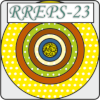Speaker
Description
Hollow beams of charged particles are the beams having a transverse profile in the form of a ring. In recent years, they are actively studied. For example, the idea of using hollow electron beams for high-intensity beam collimation at the Large Hadron Collider at CERN was suggested in [1, 2]. Acceleration of charged particles is another promising area of using the hollow electron beams. It is possible to accelerate positrons to high energies in plasma wakefields, which are formed during the motion of hollow electron beams in plasma [3, 4]. While working with hollow electron lenses, the problem of diagnostics of the transverse sizes of both beams, the main and hollow electron beams, becomes acute. One of the ideas being actively developed now is to use gas fluorescence for the diagnostics [5]. The advantage of this method is that the properties of the beam remain practically undisturbed during measurements. Optical transition radiation is used in order to cross-check the method. For the correct processing of experimental data, it is necessary to have not only a reliable single-particle theory of radiation (i.e., radiation from a single charged particle), but also to know the analytical formula for the beam form-factor. Here we report on the theory of transition radiation from a hollow beam, taking into account the coherent effects. We calculate both the field of radiation and emitted energy per unit solid angle and per unit frequency. We also discuss the properties of such radiation from point of view of diagnostics of the beam parameters.
The research is supported by the Foundation for the Advancement of Theoretical Physics and Mathematics BASIS, Project No. 23-1-3-2-1.
[1] G. Stancari, A. Valishev, G. Annala, et al., Collimation with Hollow Electron Beams, Physical Review Letters 107, 084802 (2011).
[2] S. Redaelli, R.B. Appleby, R. Bruce, et al., Hollow electron lenses for beam collimation at the High-Luminosity Large Hadron Collider (HL-LHC), Journal of Instrumentation 16, P03042 (2021).
[3] N. Jain, Evolution of ultra-relativistic hollow electron beams during their propagation in plasmas, Physics of Plasmas 26, 023107 (2019).
[4] J. Vieira, J.T. Mendonca, Nonlinear Laser Driven Donut Wakefields for Positron and Electron Acceleration, Physical Review Letters 112, 215001 (2014).
[5] A. Salehilashkajani, H.D. Zhang, M. Ady, et al., A gas curtain beam profile monitor using beam induced fluorescence for high intensity charged particle beams, Applied Physics Letters 120, 174101 (2022)
